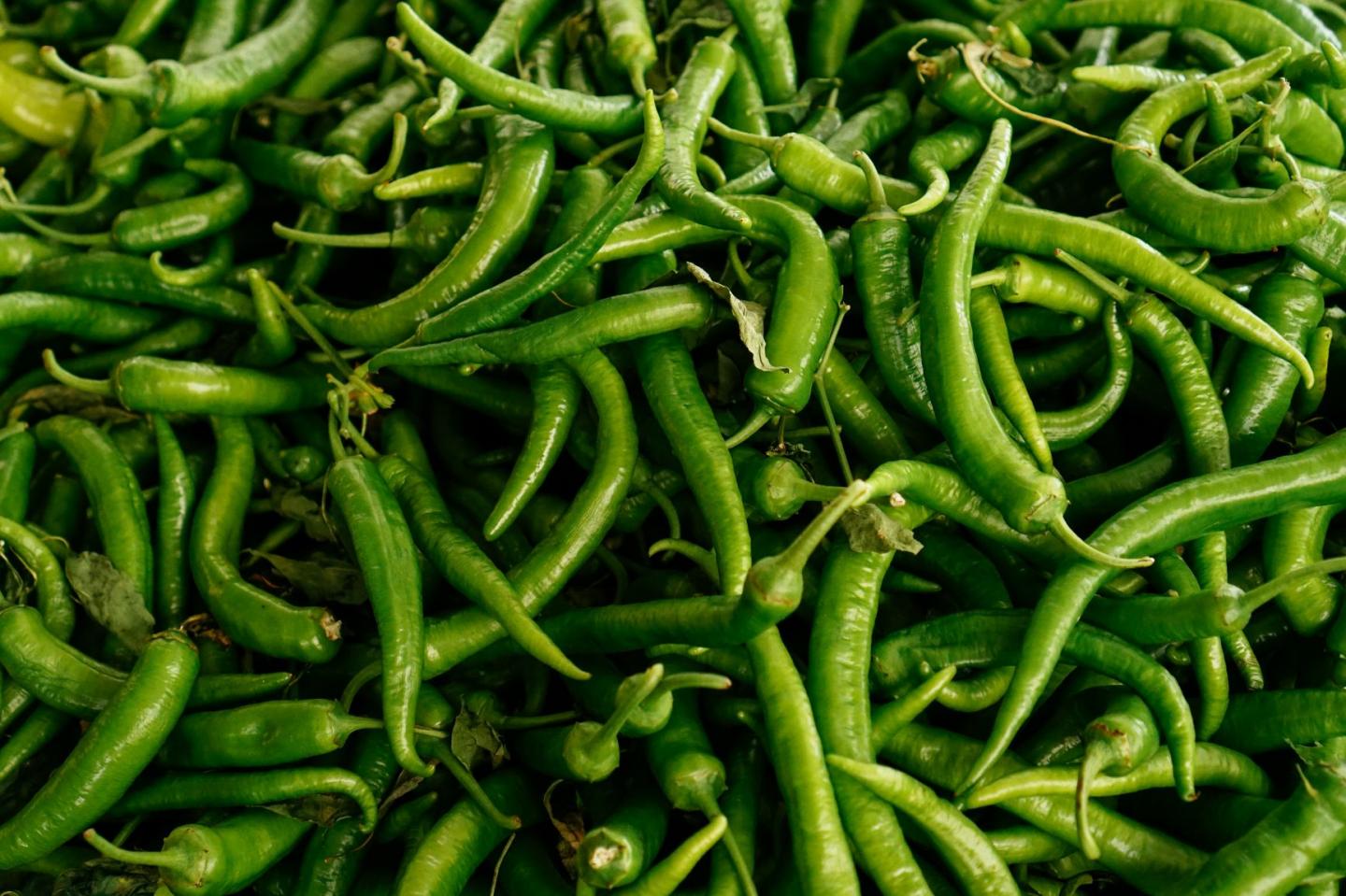MARIA ZANNIS, Innovation and Specification Adherence Auditor
In a kitchen on the fourth floor of our Tyson Foods corporate office in Chicago, there hangs a sign with ninety bold, blue words, ranging from delicious descriptors like “savory” and “juicy” to not-so-appetizing adjectives like “musty” and “rancid.”
While these words might seem a little passionate, let me give you a scenario:

You work at the largest food company in North America on the Innovation and Specification Adherence team. Part of your role includes conducting internal product audits to gauge if a product meets its certain specifications.
Still following me? Good.
So, imagine that during one of these audits, you heard responses like “this tastes great,” or “this is just okay,” or “this is terrible, and you’d have to pay me to try it again.” Given this feedback, do you have any idea about how your team needs to change or improve the product? Do you have any idea why some people may think it’s great and others maybe not so much? Could you even tell me what the product is, based on these subjective evaluations?
If you haven’t guessed it by now, this scenario hits a little close to home for me. These sentiments were some of the most common responses our Innovation and Specification Adherence team (including me) was hearing from our product evaluators. While we very much appreciated their time and feedback, we found that we weren’t getting the insights we needed—and we quickly figured out it was because we weren’t equipping people with the right sensory vocabulary.
To assist our evaluators with descriptions, we created a Sensory Word Bank to hang in our kitchen. We encourage our participants to look at the sign for inspiration and challenge themselves to use at least one word to describe the foods they sample. Since the introduction to the Sensory Word Bank, we’re finding that it’s easier to get objective feedback from our evaluators—not just thumbs up or thumbs down. We are now having more meaningful conversations about our products and helping the participants better describe the foods that they eat. We’ve even gotten feedback that participants are using our Sensory Word Bank in their daily lives—like at home with finicky kids to help them explain why they don’t like eating their vegetables!
Prior to Tyson Foods, I worked in the FSQA (Food Safety Quality Assurance) department at a flavor manufacturing facility. I spent a lot time describing the odors, flavors, and textures I was experiencing in the products I sampled. I soon found myself using my sensory vocabulary whenever I ate, and I haven’t stopped since! I feel confident and comfortable describing aspects that I do or don’t like about specific foods. Instead of saying “wow, I really love this,” or “oh my, I really don’t like this,” I prefer something along the lines of, “there is a nice balance of citrus and herbal notes in this dish,” or “the texture of this meal is very gritty.” Both are indirect ways of expressing how I feel about my food.
If you’re stuck in a word rut when it comes to voicing how you feel about your meal—fret no more!
Here are a few descriptors from our Sensory Word Bank and examples of how you can use them
in your everyday dining experiences.

Oaky (flavors and aromas associated with wood)
Scenario: You’re drinking wine and you’ve detected a flavor that you’re not quite sure how to describe, but it reminds you of wood. If you’re detecting some wood notes, it’s likely that your wine was aged in oak barrels. There are many types of oak and processes that can impart different flavors, but we’ll keep it simple.
Use it in a sentence: “I am getting a lot of oaky notes in this wine.”
Metallic (flavors and aromas associated with metals)
Scenario: You’re detecting an off-note in some deli meat that you just ate. The off-note immediately makes you think of chewing on a coin or a zipper.
Use it in a sentence: “I am identifying a metallic aftertaste in this lunchmeat.”
Zesty (flavors and aromas associated with grated citrus peel)
Scenario: You’re tasting a lot of orange flavor in a cookie you just ate. The orange impression that you’re perceiving does not taste like pulp or juice but makes you think of freshly grated orange peel.
Use it in a sentence: “This cookie has a lot of zesty orange flavor!”
Jammy (flavors and aromas associated with cooked, fruity, and concentrated jams)
Scenario: You’re eating a pastry appetizer with sausage, cheese, and fruit. You’re sensing cooked and sweet notes from the fruit. You think it could be strawberry jam.
Use it in a sentence: “This pastry bite is great! I’m getting a lot of jammy notes from the strawberry preserves.”

Earthy (flavors and aromas associated with fresh earth and soil)
Scenario: You’re eating a pasta dish with sautéed mushrooms and herbs. You’re identifying a flavor in the mushrooms that makes you think of soil or a wet forest.
Use it in a sentence: “I’m detecting slightly earthy notes from these mushrooms.”
Crumbly (the ability of a product to easily break into small pieces)
Scenario: You’re heading into work but notice you have some extra time, so you decide to stop by your favorite coffee shop. You spot a muffin that’s calling your name. Once you’ve devoured your muffin you notice that you have some evidence on your shirt.
Use it in a sentence: “That muffin was delicious, but wow, was it crumbly.”
Crispy (the force with which a product fractures; brittle, breaks easily)
Scenario: You’re out to eat with some friends at your favorite diner. You’ve received your meal and can’t wait to dig into those fries! They are perfectly golden! You take your first bite and the crunch is heard around the table.
Use it in a sentence: “These fries are all crunch and no mush! Perfectly crispy!”
The great thing about our individual food experiences is that each one is unique—depending on your personal preferences, you could use one word to describe a food that you love, but maybe the person next to you uses the same word to describe a taste or texture that they hate. That’s the beauty of objective descriptors: we can communicate clearly and effectively without letting our biases get in the way.
Don’t limit yourself to only the words above—create your own vocabulary based on words or even childhood memories (do Dunk-a-Roos taste “nostalgic” or what?)!
For all foodies or wannabe foodies, I challenge you to make it a goal to use at least one new word to illustrate what you’re tasting every day. You might even start a meaningful conversation about food or meet a new friend!
Published February 11, 2019.


0 Comments
Leave A Comment